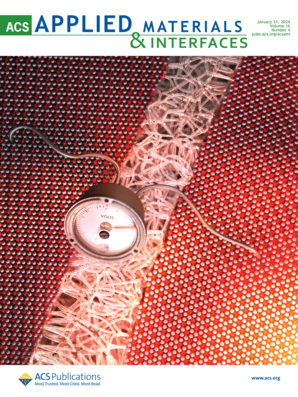A Biomimetic Janus Fibrous Membrane for Scarless Achilles Tendon Regeneration via Synergistic Modulation of an Oxidative-Inflammatory Cascade.
IF 8.3
2区 材料科学
Q1 MATERIALS SCIENCE, MULTIDISCIPLINARY
引用次数: 0
Abstract
Achilles tendon injuries present significant clinical challenges due to limited regenerative capacity and frequent adhesion formation. Here, we report a melatonin-loaded Janus fibrous membrane (MLT@JFM) that mimics the native paratenon's structure and function to promote scarless tendon healing. The biomimetic membrane consists of an inner methacrylated silk fibroin (SFMA) layer that promotes tendon stem cell functions and an outer melatonin-loaded polycaprolactone methacryloyl (PCLMA) layer that prevents adhesion formation. Through photo-cross-linking and structural interlocking, MLT@JFM achieves excellent mechanical properties and stable fixation around injured tendons. In vitro studies demonstrate that MLT@JFM effectively scavenges reactive oxygen species, modulates macrophage polarization, and maintains tendon stem cell phenotype under inflammatory conditions. In a rat Achilles tendon injury model, MLT@JFM significantly enhances functional recovery and biomechanical properties while preventing adhesion formation. Transcriptomic analysis reveals that MLT@JFM promotes scarless healing through synergistic regulation of oxidative-inflammatory cascades and the enhancement of tissue regeneration. This study presents MLT@JFM as a promising therapeutic strategy for tendon repair and provides new insights into biomaterial-mediated tissue regeneration.通过氧化-炎症级联的协同调节,用于无瘢痕跟腱再生的仿生Janus纤维膜。
跟腱损伤由于再生能力有限和经常粘连形成,给临床带来了重大挑战。在这里,我们报道了一种含有褪黑素的Janus纤维膜(MLT@JFM),它模拟了天然的副腱膜的结构和功能,以促进无疤痕肌腱愈合。仿生膜由内部的甲基丙烯酸丝素(SFMA)层和外部的褪黑激素负载的聚已内酯甲基丙烯酸(PCLMA)层组成,前者促进肌腱干细胞功能,后者防止粘连形成。通过光交联和结构互锁,MLT@JFM在受伤肌腱周围实现了优异的机械性能和稳定的固定。体外研究表明MLT@JFM能有效清除活性氧,调节巨噬细胞极化,维持炎症条件下肌腱干细胞的表型。在大鼠跟腱损伤模型中,MLT@JFM显著增强功能恢复和生物力学性能,同时防止粘连形成。转录组学分析显示MLT@JFM通过协同调节氧化-炎症级联反应和增强组织再生来促进无疤痕愈合。这项研究提出MLT@JFM作为一种有前途的肌腱修复治疗策略,并为生物材料介导的组织再生提供了新的见解。
本文章由计算机程序翻译,如有差异,请以英文原文为准。
求助全文
约1分钟内获得全文
求助全文
来源期刊

ACS Applied Materials & Interfaces
工程技术-材料科学:综合
CiteScore
16.00
自引率
6.30%
发文量
4978
审稿时长
1.8 months
期刊介绍:
ACS Applied Materials & Interfaces is a leading interdisciplinary journal that brings together chemists, engineers, physicists, and biologists to explore the development and utilization of newly-discovered materials and interfacial processes for specific applications. Our journal has experienced remarkable growth since its establishment in 2009, both in terms of the number of articles published and the impact of the research showcased. We are proud to foster a truly global community, with the majority of published articles originating from outside the United States, reflecting the rapid growth of applied research worldwide.
 求助内容:
求助内容: 应助结果提醒方式:
应助结果提醒方式:


